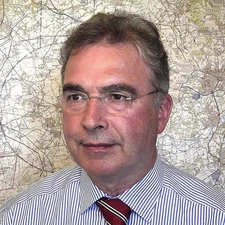John P. Burrows

The 2016 Alfred Wegener Medal & Honorary Membership is awarded to John P. Burrows for developing, adopting and applying instrumentation for remote sensing of the atmosphere, and initiating major advances in understanding the chemistry and dynamics of the atmosphere.
John Burrows is famous for his work on the physics and chemistry of the atmosphere. He started his scientific career with pioneering laboratory studies of the kinetics and spectroscopy of atmospheric constituents, examining the kinetics of radical reactions (nitrate, chlorine oxide, peroxy radicals) of great importance both for air quality and for stratospheric ozone depletion. He made precise measurements of molecular absorption cross sections. He developed an in-situ peroxy radical detector using the chemical amplification technique that has recently been further developed, employing the cavity ring down detection of nitrogen dioxide for use on the research facility HALO (High Altitude LOng duration) aircraft platform. Burrows developed and adapted techniques from applied physics like laser magnetic resonance, UV- and IR absorption spectroscopy, and laser induced fluorescence. He is best known for his contributions to the field of remote sensing of the atmosphere, and he initiated and scientifically led the development of instrumentation for the measurement of key atmospheric trace gases in the atmosphere from space using differential optical absorption spectroscopy and related retrieval techniques. Burrows pioneered the retrieval of tropospheric trace constituents by passive remote sensing of solar radiation upwelling at the top of the atmosphere. He conceived SCIAMACHY (Scanning Image Spectrometer for Atmospheric Chartography), an instrument capable of globally mapping a large set of trace gases relevant for atmospheric chemistry. His miniature GOME (Global Ozone Monitoring Experiment), the first European satellite sensors for tropospheric chemistry studies, gave a strong push to our understanding of atmospheric chemistry in the Earth system. Internationally recognised as the ‘father’ of these first European satellite sensors that monitor tropospheric composition from space, Burrows has led the European area in remote sensing of the atmosphere.
Medal lecture video (Youtube) of the Alfred Wegener Medal given at the EGU General Assembly 2016.
